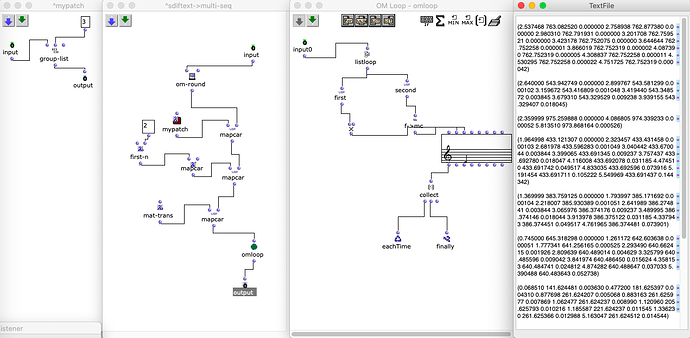Many thanks for the reply, Karim!
I’m ok with the as->om into a chord-seq and getting it to ‘quantize’ to microtones, and to control the level of granularity or ‘snap’ to grid with the approximation settings.
Maybe this is not possible because everything is chopped into discrete frames but I’m keen to try to take partial line from SPEAR/Audiosculpt that visually indicates a pitch that fluctuates up and down and translate those to single notes with their pitch on that line continuously varied with pitch bend.
So let’s say I highlight just 3 ‘wiggling’ partial lines in SPEAR, and delete everything else. I export the SDIF and would like to split that to 3 MIDI notes (on 3 channels) and the ‘wiggling’ up and down in pitch of the partial line for that note gets translated to a continuously changing pitch bend (or changing at the frame rate).
Maybe I’ve misunderstood the mechanism and the framed/sliced approach doesn’t invite this kind of thing(?).
Thanks again Karim.
Graham


